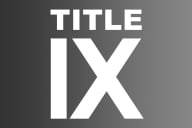You have /5 articles left.
Sign up for a free account or log in.
Many of us have seen the clip of a Zoom meeting with two Texas attorneys and a judge, in which one of the lawyers cannot figure out how to disable a Zoom filter that, well, made him look like a talking cat. Exasperated, as he and an unseen assistant try to wrangle Zoom, he tells the judge, “I am not a cat.”
We have all surely had to make some kind of assurance like this in the last year: I am a competent professional! Recently, I forgot to turn my own video off during a meeting break and someone saw me pick up a bag that had contained cookies -- I ate all the cookies, readers -- tip the bag of crumbs directly into my mouth, and then brush cookie crumbs out of my own hair. Note: I did not try to eat any of the crumbs that landed on my shirt; I am not a cat, and I did not lick my shirt.
Filters can malfunction by refusing to reveal us, and by refusing to shield us. We can -- I’m sure many of us already do -- teach with this tension. Claiming an absence of filters (#nofilter) asserts spontaneity and authenticity, the ease and trust of a “natural” style. Applying a visible filter emphasizes artifice, sometimes lending a natural aspect to the interaction where the filters are not visible. Do we want our students to see the scene of teaching and learning as natural?
To different degrees in non-pandemic times, teachers must filter out of student view the messy production of classroom success, the messy lives out of which professionalism emerges. (And the actual pressure on me -- a white, tenured professor -- is very slight compared to more precarious colleagues or faculty of color.) Students feel that a discussion is completely organic -- the ideas bouncing around spontaneously, the electricity in the air as they talk through concepts. Even as they might spark up into how these ideas bear on their experiences outside the classroom, the time in class feels like a thing apart: a clear, well-designed space to think is one where the design and the labor that went into it don’t draw the eye. In this year, students see all the pressures on the space, and some of the labor that goes into -- has always gone into -- the design.
My students have seen the time it takes me to transition between screens, my laptop’s shortened battery power in a cold shed, the accumulating minutes we lose every week to unmuting, remasking, unfreezing, breaking out, regathering. Meetings have been interrupted to sign my kid back into his remote classroom, to admit the repairperson, to shut away dogs barking at what I assume is a lawyer Zooming from Texas. We can’t filter these pressures out anymore.
Much as I look forward to a less complicated classroom space next year, I believe it’s useful for students to see the vulnerability of the space where they learn and the things that slow us down in uneven and particular ways. There is the leisured slowness of the natural, “no-filters” classroom experience, but that gloriously uninterrupted time and space -- is made of filters: accessible childcare, health care, disposable income, access to technology, job and housing security. Against the memory of leisurely slowness, now there is the labored slowness of inefficiency -- the layers of filtering labor suddenly in the frame for students. As I joked with my students this week teaching Woolf, we are longing again for “a room of one’s own,” but how many of us have the space and safety we need to do our work well? Now, when the question reaches so widely, let’s encourage our students to keep asking it, always to ask it. The way the “natural” state of things falls apart is funny sometimes, but it must also be instructive. How can we teach the vulnerable classroom as well as within it, make visible the forms of privilege that allow us to look competent and steady?
Previously published in The Craft, newsletter and blog for the University of the South’s Center for Teaching.
Lauryl Tucker is an associate professor of English at the University of the South. Expect her book Unexpected Pleasures: Parody, Queerness, and Genre from Clemson University Press in spring 2022.








